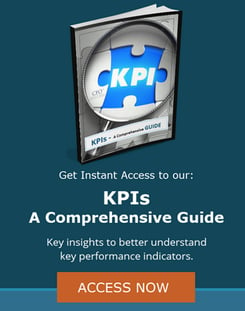 During the course of normal business, it is sometimes necessary to cut ties with established business partners in favor of other organizations that are better able to meet your company’s needs. Any number of reasons might lead to this transition, including, but not limited to:
During the course of normal business, it is sometimes necessary to cut ties with established business partners in favor of other organizations that are better able to meet your company’s needs. Any number of reasons might lead to this transition, including, but not limited to:
- Growth of your firm that exceeds what your business partner can offer.
- Growth of the business partner that takes their service offerings in a different direction.
- Poor service or reliability.
- Increasing costs.
- A change in business circumstances that no longer makes you a good match.
A change in service providers can apply to bankers, CPAs, outsourced payroll providers, HR, outsourced accounting, IT, accounting platforms, and any number of other business services. The challenge when making a switch is managing the transition so that it goes smoothly for all parties involved to minimize business disruption.
In this article I’ll share some lessons learned from a recent outsourced payroll provider transition that has caused considerable pain for my client, their employees, and owners. My hope is that the real-world example I provide will serve as a cautionary tale, so you understand why it’s so important to be strategic when changing business service providers.
(Keep in mind that while this example has a lot of details that are specific to payroll providers the key takeaways really do apply to any new service provider transition! And there are many incredibly capable payroll providers. This example certainly does not apply to all.)
A Real-World Example of a Business Services Transition Gone Wrong
My client chose to transition from Payroll Provider A to Payroll Provider B. This transition was made in the middle of a calendar quarter. Most of the transition went smoothly (as smoothly as possible for a transition of this magnitude). But 18 months later, client employees began to receive notices from the IRS that they owed additional income tax for the year because they had W-2s on file with the IRS that they did not submit with their 1040s. Needless to say, this caused an uproar among the employees and called into question the accounting team’s capabilities. What initially looked like a painless process was suddenly causing huge headaches for everyone involved and jeopardizing their ability to retain top talent. The problems for my client began compounding at this point because in addition, the IRS rejected the client’s payroll deposits for the rest of the year (as made through Provider B).
Come to find out, Provider A did not properly process the client out of their system, and ended up filing W-2s for the portion of the year that they serviced the payroll. Of course, Provider B filed W-2s for the entire year properly, which the employees used to file their taxes. So, employees had two W-2s on file with the IRS, and they only knew about one of them (filed by Provider B). So, they received tax bills for the amounts filed by Provider A, which were already included in the W-2s filed by Provider B. This is not an issue that’s easy to correct after the fact, and it affected every staff member at every level of the organization!
We also learned that Provider A made 941 quarterly filings for the partial quarter, which caused the IRS to reject Provider B’s filings for that quarter and return payroll deposits made on the client’s behalf for the rest of the year. The client received a sizeable check from the IRS which they did not cash, thanks to timely advice from their outside CPAs.
When confronted by this situation, Provider A eventually admitted their error after significant back and forth and committed to filing W-2Cs to correct the error for each employee. But the saga didn’t end there! To add insult to injury, Provider A tried to blame the client for not expressly requesting that they not file W-2s for that calendar year (ignoring the fact that few could have foreseen that they would ever do such a thing in the first place!). This is not meant as an indictment of Provider A but rather to show what can happen with a perfect storm of circumstances.
So, what did my client learn from this situation?
- Where possible, waiting until the end of a calendar quarter to make a payroll provider transition is always best.
- Download as much of your data as possible before the transition. This includes time and attendance data, PTO activity, W-2 and 941 filings (if you don’t already have them), and anything else in the database that you may need access to later. With so many providers steering clients towards lifecycle data management applications within a payroll system, you don’t want to be at a provider’s mercy to access your own data should you need it in the future.
- Whenever you transition to a new payroll provider, get clear agreement in writing on your current provider’s offboarding policies and practices so that you will know what to expect at quarter and year-end.
3 Key Takeaways Regarding Business Transitions
The lessons my client learned are quite specific to payroll providers, but the general principles offered in a scenario like this apply to transitions to any new service provider you might need to use:
- Pick your transition period carefully, taking into account tax filing cycles, financial reporting requirements, and other business considerations.
- Gain custody and access to your own historical data and save it securely.
- Get transition process details in writing from both your old and new providers.
With each of these best practices your leadership team will need to roll up their sleeves and get their hands dirty to understand and oversee the process so that it works for your company, rather than the convenience of the providers. Alternatively, you can hire a part-time executive to facilitate the transition for you.
When your organization needs help managing a financial service provider transition, we can help! Our team of consulting CFOs and Controllers assists organizations with strategic changes every day. As trusted financial executives we have considerable experience with business transition planning and execution. Contact us to find out more today!
About the Author
Kurt Maass – Partner, CFO Selections Kurt Maass is a versatile and accomplished executive with 30+ years of experience in finance, accounting, and operations roles. He has worked extensively in the wireless, landline telecom, ecommerce, manufacturing and energy conservation sectors. He brings a unique perspective from working with both very large companies (managing operational and capital budgets in excess of $2B annually) as well as very small early-stage start-ups, where he has actively participated in multiple equity and debt financing rounds.
Kurt Maass is a versatile and accomplished executive with 30+ years of experience in finance, accounting, and operations roles. He has worked extensively in the wireless, landline telecom, ecommerce, manufacturing and energy conservation sectors. He brings a unique perspective from working with both very large companies (managing operational and capital budgets in excess of $2B annually) as well as very small early-stage start-ups, where he has actively participated in multiple equity and debt financing rounds.
Kurt holds a Master’s degree in Whole Systems Design/Organizational Development from Antioch University Seattle, and an undergraduate accounting/business degree from Pacific Lutheran University.





